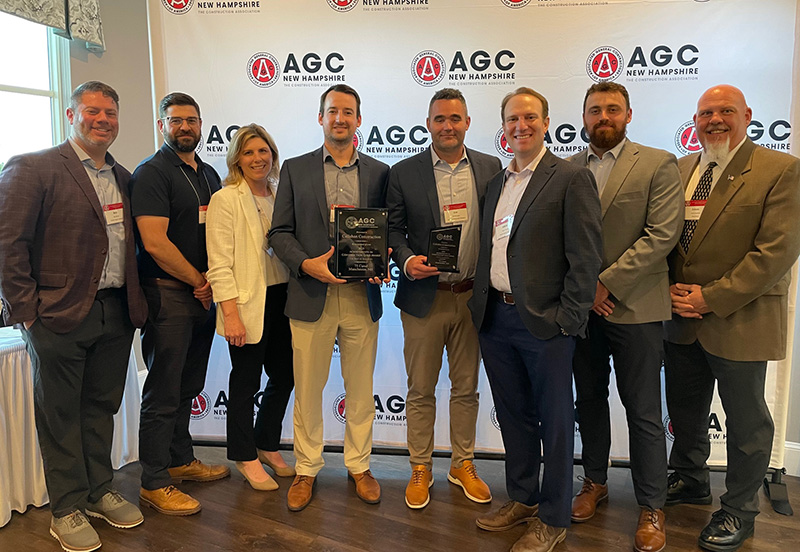News: Construction Design & Engineering
Posted: May 19, 2010
Applying reason to interior design There is a reason for everything - part 1
If you own or manage property, how can you add value to your investment? There are certainly many answers to this question - signage, landscaping, upgrade of building systems. But let's look at how the experience and knowledge of an interior designer can influence your bottom line.
While interior designers participate in the development of all types of spaces, this article will address the benefits of including an interior designer on the team assembled for workplace design.
Employers all agree that employee productivity is vital to their success. What can be done to attract and retain talented employees? How can employee productivity be improved? Studies have shown that effective workplace design directly correlates to improved business performance. Surveys reveal that between 50% and 60% of work spaces do not support job function or creativity. A supportive workspace has the potential of increasing productivity by 19% which can translate into millions of dollars in overall profits each year. This increase translates into huge gains in profits.
Involving an interior designer in the initial phase of a project ensures comprehensive programming. This phase is the information gathering portion for workplace design and can be as simple as understanding the interrelationships and space needs of a small office, or as complex as the reorganization of departments, divisions, and even buildings within a company campus. The designer asks management key questions to identify corporate philosophy, mission, future growth and business goals and asks employees to quantify communication requirements, work space configuration, and storage needs. By gathering and analyzing information specific to the client, the interior designer can identify adjacencies and prepare a phasing plan that minimizes construction and workday disruption. The designer will develop solutions that address functional, spatial, and visual requirements that will result in an effective, efficient and beautiful space. Opting to hastily address each issue as it arises instead of utilizing the careful analysis and planning of the programming phase can result in a confusing and inefficient hodgepodge of layout, eventually requiring an expensive reconfiguration of the entire workplace. Programming lays the foundation for solid design solutions and reduces the need for multiple schematic revisions.
Large complicated projects may require major relocation of people and equipment. The most cost effective way to approach this type of reorganization is preparation of a master plan. Master planning is detailed programming focusing on a client's anticipated corporate direction and growth and how that impacts the existing workplace. Interview analysis, adjacency charts, office and workstation sizes, plans, phasing steps, and other data are compiled and presented to the client as a standard for all future corporate workplace development.
One of the most important concerns of owners and managers is also the designer's primary focus in workplace design - the safety, health and comfort of the people who work there. An interior designer's knowledge of and adherence to life safety and fire codes is essential. Egress doors, wall and door construction, and clearances for stairs and corridors are some of the obvious areas of attention. However, flooring material, wall, ceiling, window treatments, furniture, and fabrics must all meet numerous fire and safety standards. Interior designers are well versed in these regulations and through relationships with vendors and manufacturer's reps, industry seminars, and continued research interior designers stay current with product. All specification of product must meet the national, state, and local safety guidelines for its intended use. Only finishes and furniture that pass rigorous tests for fire, smoke, slip resistance, wear, and more will be considered. "Do-it-yourself" interior finishes can result in tragedy as evidenced by the infamous Rhode Island night club fire.
An effective workplace affords people the opportunity to focus on individual tasks as well as collaborate and even socialize with fellow workers. Interior designers have extensive knowledge about lighting, acoustics, ergonomics and indoor air quality, all factors that affect health and comfort. Failure to address any one of these can undermine employee performance and result in health issues.
Part 2 will discuss such physical properties in the workplace and the role that the interior designer plays in enhancing the work environment and improving employee productivity.
Linda Works, LEED AP, is an interior designer with Wessling Architects Inc., Quincy, Mass. Cheryl LaFond-Lewis co-authored this article.
MORE FROM Construction Design & Engineering
Nobis Group awards Robinson and Moreira STEM scholarships
Concord, NH Nobis Group, a 100% employee-owned consulting firm specializing in engineering and environmental solutions across the Northeast, has named the recipients of its 2025 STEM Scholarship: Andie Moreira of

Quick Hits
Columns and Thought Leadership

The design-build advantage: Integrated interior design solutions - by Parker Snyder
When it comes to corporate interior spaces for both commercial and industrial projects, partnering with a design-build firm with in-house interior design services can offer clients many benefits. Unlike traditional delivery methods where interior designers operate independently from the design and construction teams, often creating a longer project timeline as cost negotiations and revisions ensue

Careers in Construction Month focus on training and safety - by Joe Camilo
October is Careers in Construction Month, and rarely has it been more consequential. According to our chapter’s national parent organization, the construction industry needs to attract half-a-million new workers in the coming year to meet demand. Addressing that need is a huge job, but we at ABC MA are trying to do our part.

Ask the Electrician: Is summer a prime time for commercial electrical maintenance?
The answer is “Yes!” While January marks the official new year, many businesses view September as a fresh start. This makes summer an ideal time for commercial property owners to schedule long-term electrical maintenance projects.

The rise of incubators and co-working spaces: The latest in life sciences - by Matt Combs
In recent years, the life science industry has witnessed a shift in how companies operate and innovate. One of the key driving forces behind this transformation is the emergence of incubators and co-working spaces specifically tailored to meet the unique budget and schedule needs of startups.







.png)